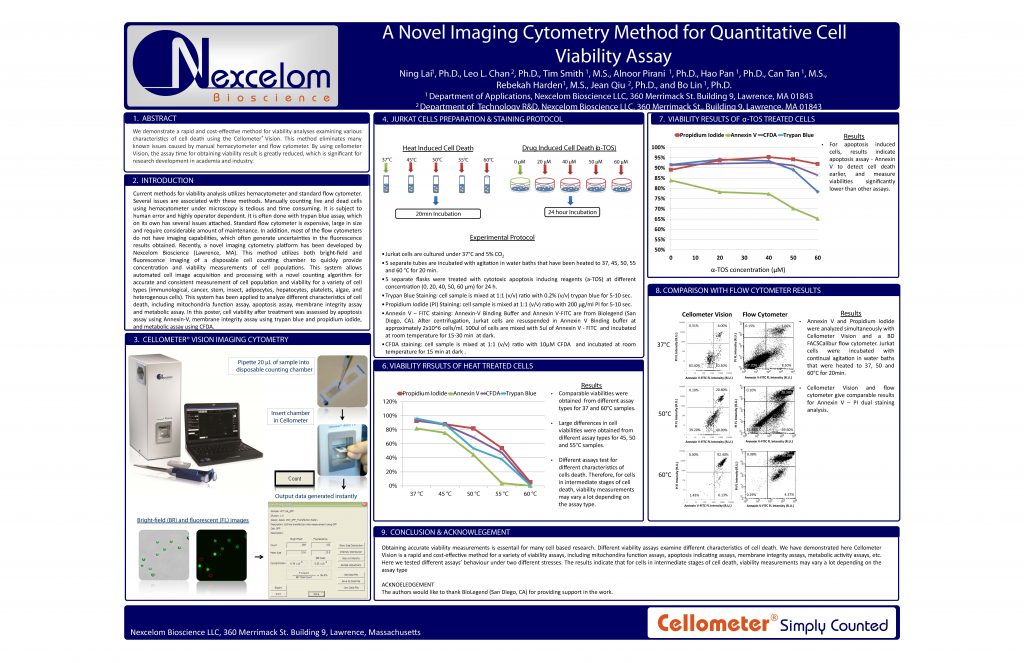A Novel Imaging Cytometry Method for Quantitative Cell Viability Assay
Ning Lai, Leo L. Chan, Tim Smith, Alnoor Pirani, Hao Pan, Can Tan, Rebekah Harden, Jean Qiu, and Bo Lin
We demonstrate a rapid and cost-effective method for viability analyses examining various characteristics of cell death using the Cellometer® Vision. This method eliminates many known issues caused by manual hemacytometer and flow cytometer. By using Cellometer Vision, the assay time for obtaining viability result is greatly reduced, which is significant for
research development in academia and industry
Current methods for viability analysis utilizes hemacytometer and standard flow cytometer. Several issues are associated with these methods. Manually counting live and dead cells using hemacytometer under microscopy is tedious and time consuming. It is subject to human error and highly operator dependent. It is often done with trypan blue assay, which on its own has several issues attached. Standard flow cytometer is expensive, large in size
and require considerable amount of maintenance. In addition, most of the flow cytometers do not have imaging capabilities, which often generate uncertainties in the fluorescence results obtained. Recently, a novel imaging cytometry platform has been developed by Nexcelom Bioscience (Lawrence, MA). This method utilizes both bright-field and fluorescence imaging of a disposable cell counting chamber to quickly provide concentration and viability measurements of cell populations. This system allows automated cell image acquisition and processing with a novel counting algorithm for accurate and consistent measurement of cell population and viability for a variety of cell types (immunological, cancer, stem, insect, adipocytes, hepatocytes, platelets, algae, and heterogenous cells). This system has been applied to analyze different characteristics of cell death, including mitochondria function assay, apoptosis assay, membrane integrity assay
and metabolic assay. In this poster, cell viability after treatment was assessed by apoptosis assay using Annexin-V, membrane integrity assay using trypan blue and propidium iodide, and metabolic assay using CFDA.

